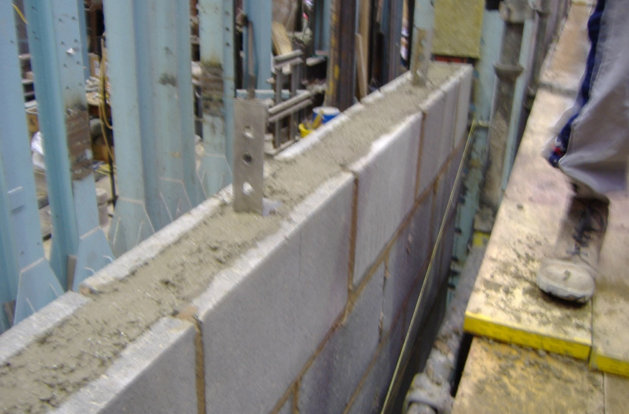Hamish Corbett1 and Geoff Edgell2
- Wembley Innovation Ltd, Atlas Road, Wembley, Middlesex, HA9 0JH, United Kingdom, hamish.corbett@wembleyinnovation.co.uk
- CERAM, Queens Road, Penkhull, Stoke-on-Trent, Staffordshire, United Kingdom, geoff.edgell@ceram.com
ABSTRACT
In 2006 CERAM began an experimental programme to investigate the performance of large blockwork walls, reinforced at intervals up their height by bond beams[1]. The concept was developed by Wembley Innovation as a simple alternative to the use of wind posts. The performance of the walls was very encouraging and lateral loads in the region of 6kN/m2 were satisfactorily resisted. Since the initial tests various configurations of the walls, for example wall height to length ratios have been varied, the introduction of windows and door openings have been investigated and the connections to the framing elements of the building have been refined. In order to introduce the system to the mainstream of structural engineering consultants in the UK and elsewhere CERAM produced a design procedure which has been developed in conjunction with consultants Jenkins and Potter and Buro Happold. The procedure essentially builds upon the approach in the UK for the design of walls containing prefabricated bed joint reinforcement and incorporated in BS 5628: Part 1. As current UK Codes of Practice[2] are due to be withdrawn in 2010 and the inclusion of new material in the Eurocode (EN 1996-1-1, Eurocode 6)[3] is not yet possible CERAM as an independent body has published a Design Guide[4] for the system. This paper introduces the guide, explains the provisions and shares the supporting test evidence. The system has been used on a number of major schemes and some feedback on the experience so far is given.
KEYWORDS: Aggregate concrete blockwork, lateral load design, bond beams
A8-5



